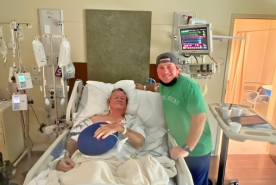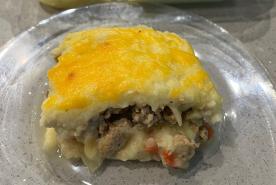July 02, 2015
<p>NODAT often arises during the first six months after a transplant, but it can also occur at any time. Now that you have your new kidney, what can you do to <a href="/content/can-you-prevent-new-onset-diabetes-after-transplantation-nodat"><strong>reduce your risk of developing diabetes</strong></a>? </p>
Jeanette Lorang RN
The incidence of New Onset of Diabetes After Transplant (NODAT) ranges from 15%-50% and often occurs during the first 6 months after transplant, when patients are treated with high doses of immunosuppression and glucocorticoids. It can also occur at any time after transplant. Studies have shown a higher incidence of NODAT in transplant recipients with an increasing number of risk factors. These risk factors fall in two different categories: non modifiable and modifiable.
Non Modifiable risk factors are those that cannot be changed. These include:
- Age: Those older than 40 years old are at increased risk
- Ethnicity: Those of African & Hispanic descent appear to have some type of higher sensitivity to the side effects of immunosuppressant medications
- Family history: This can increase the risk for NODAT up to seven times
Modifiable risk factors are those that can be changed through behavioral modifications or medication changes:
- Weight: Being overweight increases your risk for NODAT, and those with body mass indexes (BMI) of 25-30 are at higher risk.
- Hyperlipidemia: high cholesterol and triglycerides. You may be able to modify these levels with dietary changes or medication, so ask your clinician about treatments.
- Infection: Cytomegalovirus (CMV) and Hepatitis C virus (HCV) are known to cause insulin resistance, which makes blood sugar levels rise. The Hepatitis C virus also causes some islet cell damage and dysfunction. Islet cells are the cells that secrete insulin, the hormone that controls how much sugar is in your blood.
- Antirejection medications: Glucocorticoids (aka steroids) increase insulin resistance and decrease insulin sensitivity (requiring more insulin to bring blood sugars back into control). Some new protocols are now being used post-transplant that call for low or no steroid use. Using intermittent high dose steroids to treat acute rejection also appear to be a particularly strong risk factor for NODAT. It can be a balancing act between preventing kidney rejection and preventing diabetes, and unfortunately there is no foolproof formula.
- Immunosuppression: Tacrolimus and other similar medications are known for their “diabetic causing” effects, due to their destructive nature on the islet cells and their ability to cause insulin resistance. The use of Tacrolimus is a major risk factor that contributes to NODAT. In order to provide a dose high enough to prevent rejection while limiting damaging effects, blood levels are measured regularly to make sure the amount of medication being taken is at the lowest possible dose. Sirolimus has also been associated with insulin resistance.
NODAT places transplant recipients at a higher risk of other complications, including graft survival and cardiovascular disease, so what can be done to reduce the risk for developing NODAT? If we are able to make one change in our lives that could lessen the risk of NODAT, it would be to manage and/or lose weight through diet and exercise. When there is less weight to carry, our bodies are able to control the blood sugars more effectively. Eating fresh, low fat, low carbohydrate foods makes it easier to maintain a healthy weight. These also help to lower cholesterol and triglyceride levels. When we are active, our bodies are able to use the insulin we secrete more effectively and use less of it. Being physically active also helps our bodies to control hyperlipidemia.


















